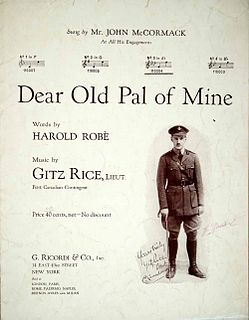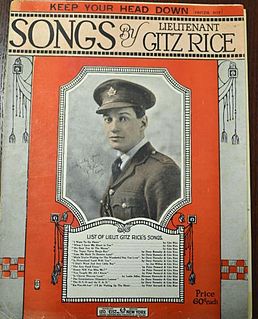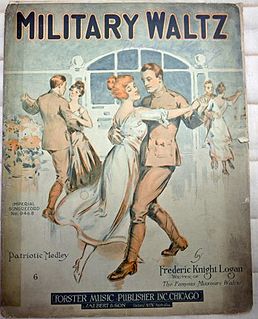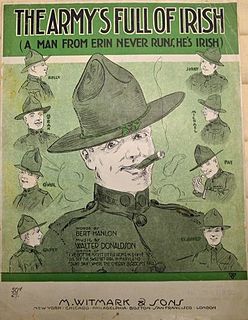| "There's a Garden of Crosses in No Man's Land" | |
|---|---|
| Song | |
| Language | English |
| Published | 1918 |
| Songwriter(s) | Composer: Gus Wackrow Lyricist: Wm. Robinson |
There's a Garden of Crosses in No Man's Land is a World War I song written by William Robinson and composed by Gus Wackrow. The song was published in 1918 by the Elite Publishing Company in Boston, MA.

World War I, also known as the First World War or the Great War, was a global war originating in Europe that lasted from 28 July 1914 to 11 November 1918. Contemporaneously described as "the war to end all wars", it led to the mobilisation of more than 70 million military personnel, including 60 million Europeans, making it one of the largest wars in history. It is also one of the deadliest conflicts in history, with an estimated nine million combatants and seven million civilian deaths as a direct result of the war, while resulting genocides and the 1918 influenza pandemic caused another 50 to 100 million deaths worldwide.
The sheet music cover depicts Lady Liberty holding a laurel wreath over a cemetery with barbed wire. [1] [2]
Sheet music is a handwritten or printed form of music notation that uses modern musical symbols to indicate the pitches (melodies), rhythms or chords of a song or instrumental musical piece. Like its analogs – printed books or pamphlets in English, Arabic or other languages – the medium of sheet music typically is paper, although the access to musical notation since the 1980s has included the presentation of musical notation on computer screens and the development of scorewriter computer programs that can notate a song or piece electronically, and, in some cases, "play back" the notated music using a synthesizer or virtual instruments.

Liberty is a loose term in English for the goddess or personification of the concept of liberty, and is represented by the Roman Goddess Libertas, by Marianne, the national symbol of France, and by many others.

A laurel wreath is a round wreath made of connected branches and leaves of the bay laurel, an aromatic broadleaf evergreen, or later from spineless butcher's broom or cherry laurel. It is a symbol of triumph and is worn as a chaplet around the head, or as a garland around the neck. The symbol of the laurel wreath traces back to Greek mythology. Apollo is represented wearing a laurel wreath on his head, and wreaths were awarded to victors, both in athletic competitions. This includes the ancient Olympics — for which they were made of wild olive tree known as "kotinos" (κότινος), — and in poetic meets; in Rome they were symbols of martial victory, crowning a successful commander during his triumph. Whereas ancient laurel wreaths are most often depicted as a horseshoe shape, modern versions are usually complete rings.











